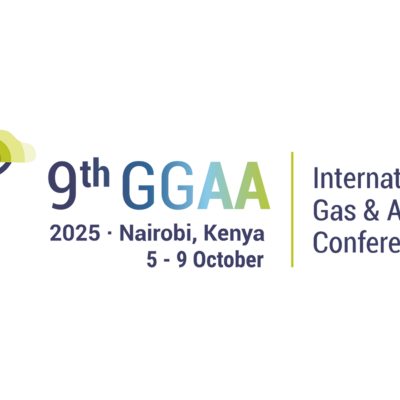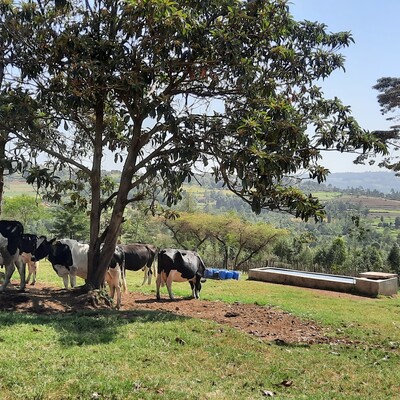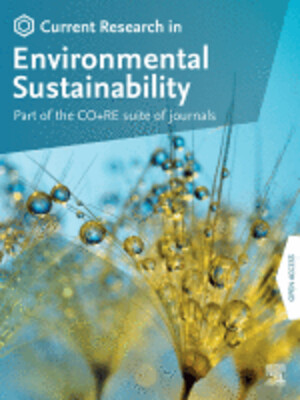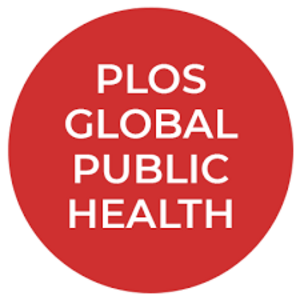
What COVID-19 reveals about humanity's relationship with the natural world
Amid the worldwide suffering caused by COVID-19, a silver lining emerged: that because of the slowdown in human activity, nature itself was healing. A widely circulated image on social media summed up the idea: it showed Mount Kilimanjaro’s towering snow-covered peaks, supposedly glimpsed from downtown Nairobi for the first time in decades. However, as scientists deepened their investigation into the pandemic, it became clear that the relationship between COVID-19 and the environment is not nearly so simple. This is especially true in Africa, where the pandemic has mixed with regional environmental trends in complex and sometimes conflicting ways. Most importantly, investigations into the pandemic’s impact on the environment have uncovered fundamental lessons about humanity’s relationship with the natural world, lessons that could help us coexist with nature and the environment more peacefully in the years to come.
When the world shut down in 2020, and human activity slowed, scientists were presented with a unique natural experiment. What they found initially was striking—due to the pandemic lockdowns, global CO2 emissions dropped by 2.4 million metric tons from 2019, the single largest CO2 decrease in modern history. NO2 emissions also dropped significantly, and these combined effects served as further evidence that humanity is the driving force behind climate change. However, scientists were also quick to note that this one-year decrease in emissions would do little to alter climate change’s long-term trajectory or mitigate climate changes already taking place.
In Kenya, where livestock account for 30 per cent of the country’s total greenhouse gases (GHG), the pandemic’s impact on emissions has been less clear. A recent research paper from ILRI scientist Michael Graham shows that livestock emissions initially decreased in northern Kenya after the pandemic caused a 19-35 per cent reduction in livestock herd size. At the same time, however, climate change has altered Kenya’s usual rainfall patterns, and in 2020, Kenya’s prolonged rainy season produced vegetative conditions that bolstered livestock feed availability. This, in turn, increased the emissions from digestion and manure production in the region’s remaining livestock, which partially offset the reduced emissions linked to smaller herd sizes. Overall, the opposing impacts from the COVID-19 pandemic and Kenya’s broader climatic trends indicate that the country’s livestock emissions likely fell by much less in 2020 than many people expected.
More generally, the Kenyan case study confirms scientists’ conclusion that emissions reductions linked to the pandemic are not likely to have any long-term effect on climate change. Both regional and global climatic trends will continue undeterred, especially if global society returns to business as usual in the wake of the pandemic.
In addition to COVID-19’s impact on global emissions, many people also initially believed that the pandemic has been beneficial to wildlife. In 2020, photographs of animals roaming through the world’s cities went viral, causing people to celebrate what appeared to be a reclaiming of lost habitat by the world’s wildlife. However, scientists examining this phenomenon have discovered that there has not been any significant movement of animals into urban areas nor any reclaiming of long-lost habitat. Instead, the slower pace of life introduced by lockdowns may have given people time to finally notice the wildlife around them. (Nearly all those images turned out to have been photoshopped—as was the image of Mount Kilimanjaro.)
While the slower pace of life linked to the pandemic may have enhanced some people’s appreciation for wildlife, it has had a less positive effect on wildlife in Africa. It is true that reductions in travel and industrial activity likely provided a slight reprieve to wildlife across the continent. However, like the reduced emissions from pandemic lockdowns, these outcomes are temporary and prone to reversal once travel restrictions ease and countries return to business as usual. Polly Ericksen, leader of ILRI’s Sustainable Livestock Systems program, explains that ‘with the drop in tourism, some wildlife conservation efforts have suffered’. Loss of tourism revenue and decreased conservation spending from abroad have reduced the capacity of conservation agencies to fund their operations. Tourism losses have also decimated the livelihoods of those working in the tourism industry, some of whom have resorted to poaching, which is on the rise again in Africa. This threatens to undo the progress many African governments had made to cut down on illegal wildlife hunting before the pandemic.
The negative environmental impacts associated with the COVID-19 pandemic are not confined to Africa. Around the world, the increased time people spent confined to their homes led to online purchases and food delivery orders that bolstered the demand for plastic packaging materials. There has also been a large increase in medical equipment disposal driven by areas experiencing COVID-19 outbreaks and growing demand for personal protective equipment (PPE). Unlike temporary emissions reductions, the plastic and waste linked to the pandemic will continue to harm the environment for decades to come. Faced with these consequences, the world must contend with the fact that COVID-19 may prove harmful to nature and the environment as well as to people.
That does not necessarily have to be the case though. From 2016-2020, Cesar Patino, co-leader of ILRI’s Mazingira Centre, was responsible for an international project in the Andean region of Peru, working with smallholder dairy farmers to promote environmentally-friendly dairy farming practices. When COVID-19 hit, however, Patino explains that ‘communities closed their borders and the farmer-to-farmer extension activities stopped suddenly’. Rather than allow the project to collapse, farmers responded by intensifying their call for knowledge exchange on sustainable farming and animal husbandry practices. They organized themselves into Facebook discussion groups and strengthened their farms’ resilience to both current and future shock events. ‘This proved to be highly successful and continues to date, even when the project operation finished long ago’, says Patino.
There is an important lesson in the story of the Andean dairy farmers. COVID-19, which is a zoonotic disease passed from animals to humans, has confirmed that humanity is not separate, but rather part of nature. As a result, there has never been a better opportunity for global society to reconsider its relationship with the natural world. COVID-19 has been unquestionably devastating for communities around the world, but the Andean dairy farmers demonstrate that it can also serve as a call to action—to implement sustainable practices, to improve our relationship with nature and the environment and ultimately, to strengthen our collective resilience to future shocks. Increased interest in conservation efforts from both the public and the private sector is evidence that this process has already begun. If people around the world can turn that momentum into concrete actions centred on long-term change, perhaps we do not have to return to business as usual in the wake of the pandemic. Instead, we can start working towards an improved world that is safer for humans, animals and the environment.
Related Stories
ILRI scientists and research partners contribute to growing body of knowledge on COVID-19
Strengthening capacity to tackle methane emissions from livestock in India
Nairobi and Zebras (photo credit: ILRI/Rod Waddington)




















